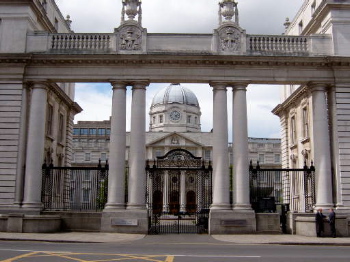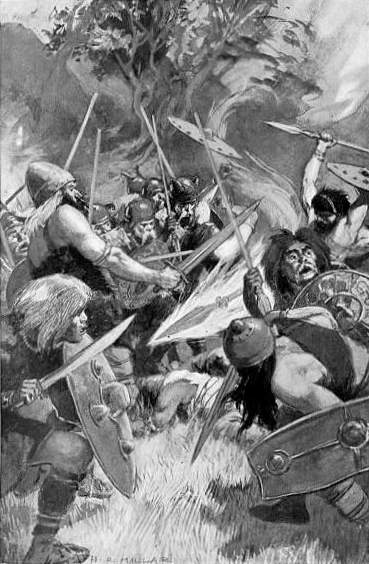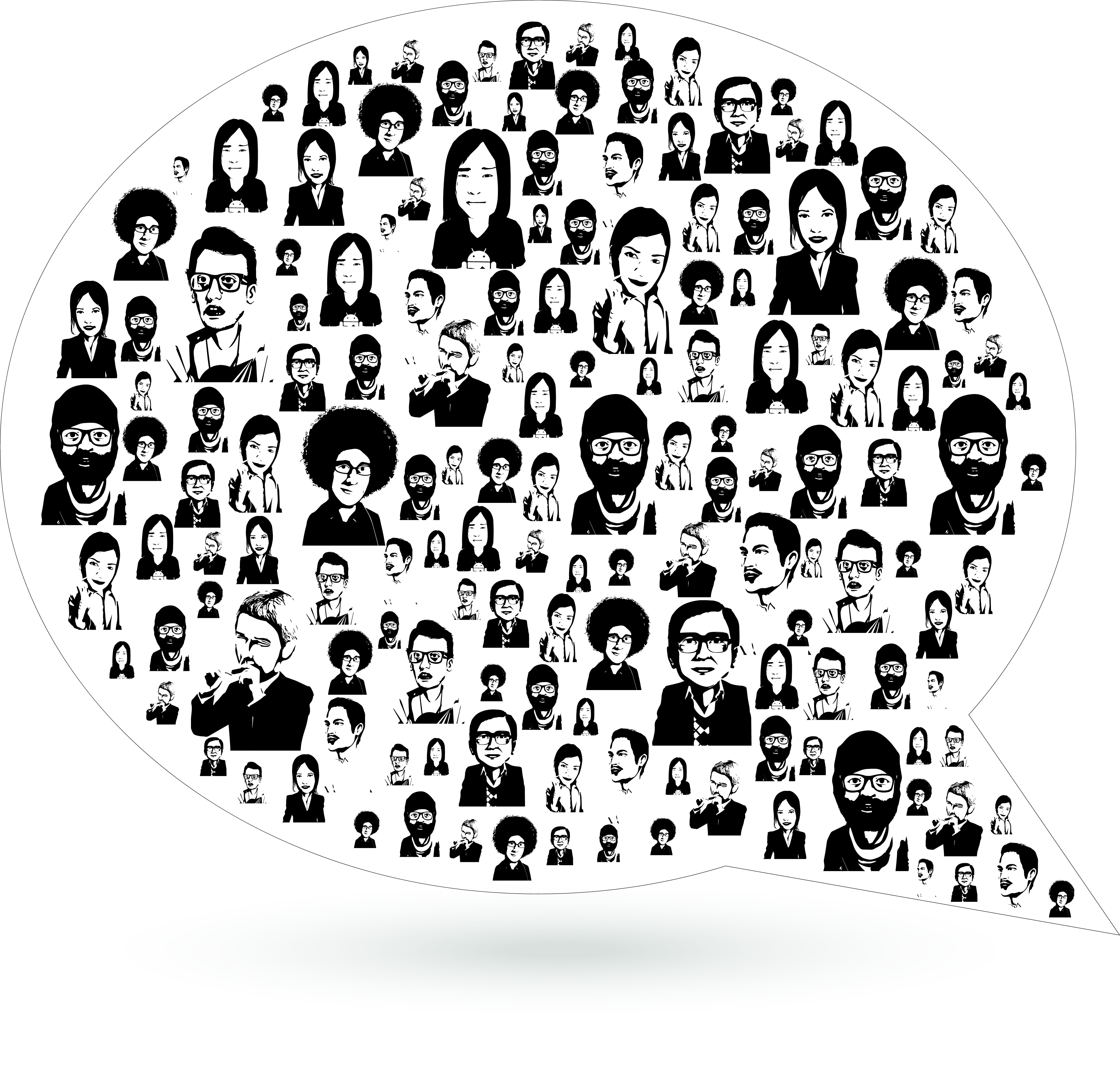|
DĂşchas Folklore Collection
The Irish Folklore Commission () was set up in 1935 by the Irish Government to study and collect information on the folklore and traditions of Ireland. History Séamus Ó Duilearga (James Hamilton Delargy) founded ''An Cumann le Béaloideas Éireann'' (The Folklore of Ireland Society) and its journal ''Béaloideas'' in 1927. Ó Duilearga prescribed a guideline for gathered oral tradition, for example, insisting that the collected data identified the informant's name and age as well as provenance of material. The Society would not only edit and publish the collected folklore, but endeavor to supply a translation or at least a summary in English or some suitable language. It was a call for the preservation of Irish folklore, and his countrymen heeded the appeal by sending in manuscripts to the Society, and these material would be published in the ''Béaloideas'' periodical. Public sentiment mounted that such a grave undertaking should not be left entirely to a voluntary society, and ... [...More Info...] [...Related Items...] OR: [Wikipedia] [Google] [Baidu] |
Irish Government
The Government of Ireland () is the executive authority of Ireland, headed by the , the head of government. The government – also known as the cabinet – is composed of ministers, each of whom must be a member of the , which consists of and . Ministers are usually assigned a government department with a portfolio covering specific policy areas although provision exists for the appointment of a minister without portfolio. The taoiseach must be nominated by the Dáil, the House of Representatives, from among its members. Following the nomination of the , the president of Ireland formally appoints the . The president also appoints members of the government on the nomination of the and their approval by the . The taoiseach nominates one member of the government as , the deputy head of government. Like the taoiseach, the tánaiste and the minister for finance must be members of the Dáil. The government is dependent on the Oireachtas to pass primary legislation and as s ... [...More Info...] [...Related Items...] OR: [Wikipedia] [Google] [Baidu] |
Seán Ó Súilleabháin
Seán Ó Súilleabháin (30 November 1903 – 13 December 1996) was a teacher and folklorist with the Irish Folklore Commission. He was a native Irish speaker from County Kerry. Educated at St Brendan's College, Killarney, he trained as a national school teacher from 1921 to 1923 at De La Salle College Waterford. He worked as a teacher in County Kilkenny and Mount Sion Primary School, Mount Sion, Waterford. In 1934, he earned an external BA in Celtic Studies from University College London, followed by an MA. In 1935, he became the first archivist with the Irish Folklore Commission, which had been established, and received training at Uppsala University in Sweden. Following the commission's closure, he worked as a lecturer at University College Dublin. He was awarded an honorary DLittCelt from the National University of Ireland in 1976. Personal life He married Mairin Sheehy, and had a son and daughter. He died on 13 December 1996, and is buried in Shanganagh Cemetery, County Du ... [...More Info...] [...Related Items...] OR: [Wikipedia] [Google] [Baidu] |
Organizations Disestablished In 1971
An organization or organisation (Commonwealth English; see spelling differences) is an entity—such as a company, or corporation or an institution (formal organization), or an association—comprising one or more people and having a particular purpose. Organizations may also operate secretly or illegally in the case of secret societies, criminal organizations, and resistance movements. And in some cases may have obstacles from other organizations (e.g.: MLK's organization). What makes an organization recognized by the government is either filling out incorporation or recognition in the form of either societal pressure (e.g.: Advocacy group), causing concerns (e.g.: Resistance movement) or being considered the spokesperson of a group of people subject to negotiation (e.g.: the Polisario Front being recognized as the sole representative of the Sahrawi people and forming a partially recognized state.) Compare the concept of social groups, which may include non-organiza ... [...More Info...] [...Related Items...] OR: [Wikipedia] [Google] [Baidu] |
Cultural Organisations Based In The Republic Of Ireland
Culture ( ) is a concept that encompasses the social behavior, institutions, and norms found in human societies, as well as the knowledge, beliefs, arts, laws, customs, capabilities, attitudes, and habits of the individuals in these groups.Tylor, Edward. (1871). ''Primitive Culture''. Vol 1. New York: J. P. Putnam's Son Culture often originates from or is attributed to a specific region or location. Humans acquire culture through the learning processes of enculturation and socialization, which is shown by the diversity of cultures across societies. A cultural norm codifies acceptable conduct in society; it serves as a guideline for behavior, dress, language, and demeanor in a situation, which serves as a template for expectations in a social group. Accepting only a monoculture in a social group can bear risks, just as a single species can wither in the face of environmental change, for lack of functional responses to the change. Thus in military culture, valor is coun ... [...More Info...] [...Related Items...] OR: [Wikipedia] [Google] [Baidu] |
Irish Folklore
Irish folklore () refers to the folktales, balladry, music, dance and mythology of Ireland. It is the study and appreciation of how people lived. The folklore of Ireland includes banshees, fairies, leprechauns and other mythological creatures, and was typically shared orally by people gathering around, sharing stories. Many tales and legends were passed from generation to generation, so were the dances and song in the observing of important occasions such as weddings, wakes, birthdays and holidays or, handcraft traditions. Definition What constitutes Irish folklore may be rather fuzzy to those unfamiliar with Irish literature. Diarmuid Ó Giolláin, for one, declared that folklore was elusive to define clearly. Bo Almqvist (c. 1977) gave an all-encompassing definition that folklore covered "the totality of folk culture, spiritual and material", and included anything mentioned in Seán Ó Súilleabháin's ''A Handbook of Irish Folklore'' (1942). It was not until 1846 that th ... [...More Info...] [...Related Items...] OR: [Wikipedia] [Google] [Baidu] |
Kevin Danaher
Kevin Danaher ( Irish, ''CaoimhĂn Ă“ Danachair'') (30 January 1913 – 14 March 2002) was an Irish folklorist with a special interest in ethnography and military history. Danaher is the author of 10 books about Irish traditional customs and beliefs, the best known of which are ''The Year in Ireland'', ''In Ireland Long Ago'', and ''Folktales from the Irish Countryside''. A respected scholar, Danaher published more than 200 articles in academic journals. Early life Kevin Danaher was born in Athea (''Ath an tSleibhe''), County Limerick, Ireland, on 30 January 1913. Danaher's father, William, was the local schoolmaster.Lysaght, Patricia.Kevin Danaher, 1913–2002 – Caoimhin O Danachair – In Memoriam – Obituary" in ''Folklore'', Volume: 113, Issue: 2, Oct. 2002. Accessed 8 February 2007 His early education was at Athea National School and Mungret College, County Limerick. In 1934, Danaher became a part-time collector for the Irish Folklore Commission.Gailey, Alan, and Ly ... [...More Info...] [...Related Items...] OR: [Wikipedia] [Google] [Baidu] |
Éamon A Búrc
Eamonn or Éamon or Eamon may refer to: * Eamonn (given name), an Irish male given name * Eamon (singer) (born 1983), American R&B singer-songwriter and harmonicist * ''Eamon'' (video game), a 1980 computer role-playing game for the Apple II *" Éamonn an Chnoic" (Ned of the Hill), an Irish song *Eamon Valda ''The Wheel of Time'' is a series of high fantasy novels by American author Robert Jordan, which began with ''The Eye of the World'' in 1990. Jordan wrote the first 11 novels of the series, and the prequel novel '' New Spring'' (2004), before hi ..., fictional character in Robert Jordan's fantasy book series ''The Wheel of Time'' See also * Ayman {{Disambiguation ... [...More Info...] [...Related Items...] OR: [Wikipedia] [Google] [Baidu] |
Peig Sayers
Máiréad "Peig" Sayers (; 29 March 18738 December 1958) was an Irish author and seanchaà ( or ) born in Dún Chaoin, County Kerry, Ireland. Seán Ó Súilleabháin, the former Chief archivist for the Irish Folklore Commission, described her as "one of the greatest woman storytellers of recent times".Sean O'Sullivan, "Folktales of Ireland," pages 270–271: "The narrator, Peig Sayers, who died on 8 December 1958, was one of the greatest storytellers of recent times. Some of her tales were recorded on the Ediphone in the late 'twenties by Dr. Robin Flower, Keeper of Manuscripts at the British Museum, and again by Seosamh Ó Dálaigh twenty years later." Biography Youth She was born Máiréad Sayers in the townland of Vicarstown, Dunquin, Corca Dhuibhne, County Kerry, the youngest child of the family. She was called Peig after her mother, Margaret "Peig" Brosnan, from Castleisland. Her father Tomás Sayers was a locally renowned expert on the oral tradition and passed on many o ... [...More Info...] [...Related Items...] OR: [Wikipedia] [Google] [Baidu] |
Irish Mythology
Irish mythology is the body of myths indigenous to the island of Ireland. It was originally Oral tradition, passed down orally in the Prehistoric Ireland, prehistoric era. In the History of Ireland (795–1169), early medieval era, myths were Early Irish literature, written down by Celtic Christianity, Christian scribes, who Christianized them to some extent. Irish mythology is the best-preserved branch of Celtic mythology. The myths are conventionally grouped into 'List of literary cycles, cycles'. The Mythological Cycle consists of tales and poems about the god-like Tuatha Dé Danann, who are based on Ireland's pagan deities, and other mythical races like the Fomorians. Important works in the cycle are the ''Lebor Gabála Érenn'' ("Book of Invasions"), a legendary history of Ireland, the ''Cath Maige Tuired'' ("Battle of Moytura"), and the ''Aided Chlainne Lir'' ("Children of Lir"). The Ulster Cycle consists of heroic legends relating to the Ulaid, the most important of whi ... [...More Info...] [...Related Items...] OR: [Wikipedia] [Google] [Baidu] |
Irish Language
Irish (Standard Irish: ), also known as Irish Gaelic or simply Gaelic ( ), is a Celtic language of the Indo-European language family. It is a member of the Goidelic languages of the Insular Celtic sub branch of the family and is indigenous language, indigenous to the island of Ireland. It was the majority of the population's first language until the 19th century, when English (language), English gradually became dominant, particularly in the last decades of the century, in what is sometimes characterised as a result of linguistic imperialism. Today, Irish is still commonly spoken as a first language in Ireland's Gaeltacht regions, in which 2% of Ireland's population lived in 2022. The total number of people (aged 3 and over) in Ireland who declared they could speak Irish in April 2022 was 1,873,997, representing 40% of respondents, but of these, 472,887 said they never spoke it and a further 551,993 said they only spoke it within the education system. Linguistic analyses o ... [...More Info...] [...Related Items...] OR: [Wikipedia] [Google] [Baidu] |
Crowdsourcing
Crowdsourcing involves a large group of dispersed participants contributing or producing goods or services—including ideas, votes, micro-tasks, and finances—for payment or as volunteers. Contemporary crowdsourcing often involves digital platforms to attract and divide work between participants to achieve a cumulative result. Crowdsourcing is not limited to online activity, however, and there are various historical examples of crowdsourcing. The word crowdsourcing is a portmanteau of "crowd" and "outsourcing". In contrast to outsourcing, crowdsourcing usually involves less specific and more public groups of participants. Advantages of using crowdsourcing include lowered costs, improved speed, improved quality, increased flexibility, and/or increased scalability of the work, as well as promoting diversity. Crowdsourcing methods include competitions, virtual labor markets, open online collaboration and data donation. Some forms of crowdsourcing, such as in "idea competiti ... [...More Info...] [...Related Items...] OR: [Wikipedia] [Google] [Baidu] |
Éamon De Valera
Éamon de Valera (; ; first registered as George de Valero; changed some time before 1901 to Edward de Valera; 14 October 1882 – 29 August 1975) was an American-born Irish statesman and political leader. He served as the 3rd President of Ireland from 1959 to 1973, and several terms as the Taoiseach. He had a leading role in introducing the Constitution of Ireland in 1937, and was a dominant figure in Irish politics from the early 1930s to the late 1960s, when he served terms as both the head of government and head of state. De Valera was a commandant of the Irish Volunteers (Third Battalion) at Boland's Mill during the Easter Rising, 1916 Easter Rising. He was arrested and sentenced to death, but released for a variety of reasons, including his American citizenship and the public response to the British execution of Rising leaders. He returned to Ireland after being jailed in England and became one of the leading political figures of the Irish War of Independence, War of Inde ... [...More Info...] [...Related Items...] OR: [Wikipedia] [Google] [Baidu] |






